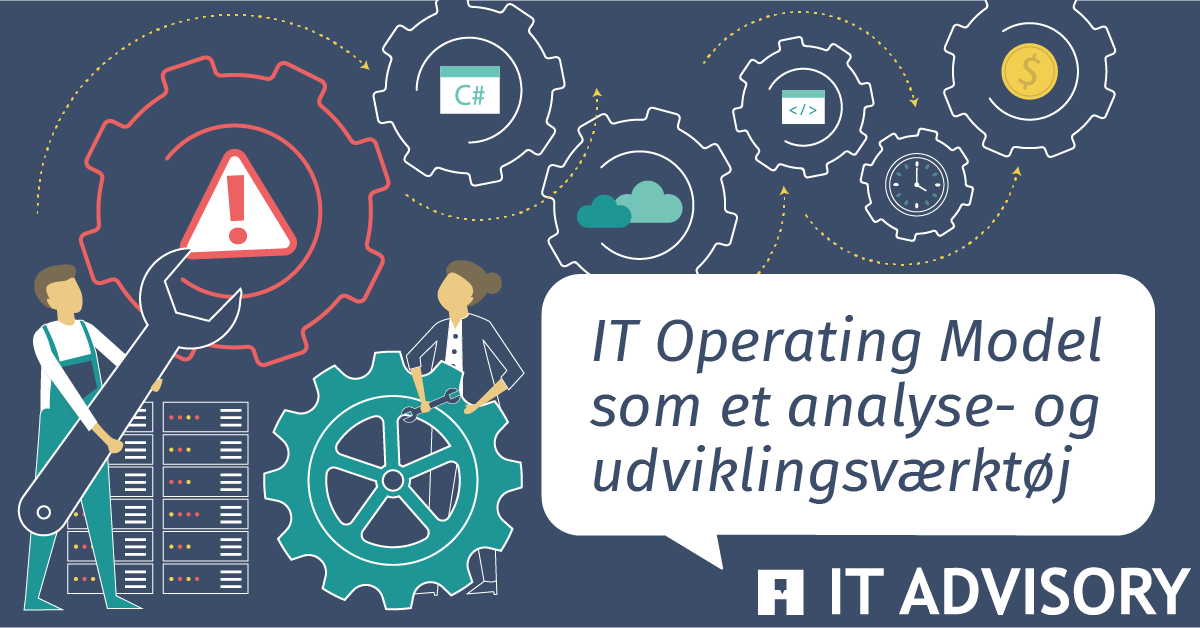Konstruktive konflikter skaber innovation, fremdrift og forandring. Projektlederens opgave er at sikre et sundt konfliktmiljø, som forebygger og håndterer unødige konflikter og fremmer konstruktiv uenighed.
Af Kristian Sørensen
Mennesker og deres adfærd er den største uforudsigelige faktor i projektarbejdet.
Som projektleder opererer man i krydsfeltet mellem definerede rammer, ressourcer og mål samt evnen til at motivere og skabe samspil mellem de mennesker, som skal bære projektet igennem.
Begrebet “konflikt” forbindes med noget negativt og fremstår derfor hos mange som noget man helst skal undgå. Konflikter og modstand er imidlertid en dynamisk ressource, der – hensigtsmæssigt håndteret – er med til at skabe udvikling og bringe nye vinkler ind i projektet. Det kræver konfliktforståelse, lederskab og mod at udvikle relationer ved at gå ind i konflikter og håndtere modstanden heri.
Projekter er “konfliktmagneter”, og det er i den forbindelse vigtigt at forstå og acceptere at konflikter er livsvilkår. Det er alene måden, man håndterer konflikterne på, der afgør om de bliver konstruktive og udviklende eller destruktive og afviklende.
Konflikter er et livsvilkår. De er hverken gode eller dårlige. Måden vi håndterer dem på, bestemmer om de er konstruktive eller destruktive.
Hvad er en konflikt?
En konflikt kan kort defineres som: “En uoverensstemmelse, der giver spændinger i og mellem mennesker”. Mens uoverensstemmelser henviser til sagen, f.eks. projektet eller projektindholdet (konfliktens genstand), henviser spændinger til hhv. ens egen indre tilstand samt til relationerne mellem de involverede parter (hvordan konflikten kan påvirke samarbejdet eller forholdet mellem projektets interessenter).
Oplevelsen af hvornår og hvorvidt der er tale om en konflikt er således individuel. En konkret udfordring eller potentiel konfliktsituation kan derfor opfattes vidt forskelligt fra menneske til menneske, og dermed også påvirke den enkelte samt dennes adfærd på forskellig vis. En konflikt bør altid tages alvorligt, også når det kun er én af flere parter, som oplever konflikten.
Trussel eller mulighed?
Den adfærd projektlederen lægger i sin tilgang til konflikter, har direkte betydning for måden de udvikler sig på. Når projektlederen undviger modstand og misforståelser i projektet eller blandt projektets interessenter, underlægges situationen den enkeltes tolkning. Herved kan uskyldige misforståelser blive en trussel for samarbejdet, da de kan udvikle sig til konflikter.
Ved at tage aktivt ansvar når modstand og misforståelser opstår, kan projektlederen styre og vende en potentiel konflikt til et fælles aktiv. At tage aktivt ansvar indebærer ligeledes at være opmærksom på samt forebygge situationer, som kan føre til en unødvendig misforståelse eller konflikt.
Følgende situationer, kan føre til konflikter, som udgør risici for projektet:
- Manglende tillid parterne imellem
- Alliancer og konfliktoptrappende adfærd
- Skjulte agendaer
- Interne magtkampe
- Konfliktsky adfærd
- Utydelig eller manglende kommunikation
- Uklarhed om rammer, roller, mål, ressourcer
- Uklarhed om forventet indsats
Som projektleder kan man forebygge og nedtrappe destruktive konflikter og i stedet kanalisere energien over i et konstruktivt uenighedsfelt med plads udvikling. Dette gøres gennem tydelig ledelse og naturlig autoritet, sætte klare rammer, og med fast greb adresserer og håndterer de parter, som udviser en konfliktoptrappende adfærd.
Konkret handler det om at skabe et sundt konfliktmiljø, hvor der er tydelighed i forventninger og adfærd, samt at involverede parter ved, hvordan de skal agere, når modstand og de uundgåelige udfordringer og konflikter opstår.
Projektlederens adfærd og ansvar
Nogle projektledere har udelukkende øjnene stift rettet mod projektets fremdrift. Selv om dette er en god egenskab, kan dette fokus – når det tager overhånd – i sig selv være konfliktoptrappende. Forestil dig en situation, hvor en leverandør ikke kan levere til tiden og hvor tidsplanen derfor påvirkes. Her kan man som projektleder gå tre forskellige veje i sit svar på denne konflikt:
SLÅ – svare aggressivt:
“Angribe, true, bruge sarkasme”
GÅ – undvige konflikten:
“Flygte, bøje af, glatte ud, aflede, ignorere, fortrænge, bruge ironi, undskylde”
STÅ – møde konflikten åbent:
“Erkende uenighed, undersøge, vise mod, søge dialog, turde spørge, håndtere”
Alle tre tilgange kan have deres berettigelse – alt afhængig af situationen, men er ikke nødvendigvis lige hensigtsmæssige. Irritationen over at tidsplanen måske må udskydes og projektmålene ændres, kan naturligt nok få en projektleder til at “slå” tilbage. Dette bliver dog ofte konfliktoptrappende, da de øvrige parter ikke føler sig hverken hørt, mødt eller forstået af projektlederen, hvorved både relationen samt yderligere forhandling om mulig løsning besværliggøres. Dette kan selv sagt være direkte skadeligt for projektet.
Ved i stedet at møde konflikten åbent, give plads til uenigheden og undersøge hvad der går galt – og hvorfor, åbner projektlederen op for forhandling. Det holder relationen intakt og skaber rum og tillid til at finde en fælles vej til en bæredygtig løsning. (Se i øvrigt parallellen til værktøjet Relationstrekanten fra artiklen ”Skab vind-vind beslutninger i dine projekter” som du finder her.
Skab et sundt konfliktmiljø
Et klassisk dilemma for projektledere er, at der ikke er direkte ledelsesret af de personer, som indgår i projekterne. Det udfordrer projektlederen ift. at skabe et samarbejdsmiljø, som motiverer de projektinvolverede til aktiv og konstruktiv indsats.
Et sundt konfliktmiljø kendetegnes ved tillid, samt at der er plads til uenighed med respekt for forskellige meninger og holdninger. Dette indebærer en fælles forståelsesramme og accept omkring konflikter og håndteringen heraf. Jo større grad der er af tillid, jo mere tryghed giver det den enkelte til at give udtryk for sine meninger og bidrage med alternative tænke-ud-af-boksen forslag. Se figuren.
Denne matrice kan anvendes til at få overblik over, hvor en gruppe potentielt set befinder sig ift. konfliktmiljø. Det enkelte felt er ikke en diagnose, men kan ses som en risiko eller mulighed, der bør analyseres. Der behøver eksempelvis ikke at være skjulte konflikter, hvis miljøet i gruppen er præget af mistillid og umiddelbar enighed, men der er grobund for, at de opstår.
Uenighed fører til innovation
Uenigheden skaber positiv energi når rammerne er trygge. Som nævnt er graden af konfliktoplevelsen individuel. Nogle har det svært med uenighed, andre trives eller motiveres dermed. Sagt på anden vis – vi har hver vores ”provokationsgrænse” for, hvornår vi oplever en konflikt som destruktiv eller konstruktiv.
I gruppesammenhæng bliver det projektlederens opgave at skabe bevidsthed om gruppens fælles provokationsgrænse (den reelt laveste fællesnævner). Men denne bevidsthed kan projektlederen udvikle den tillid og tryghed, som rykker den fælles provokationsgrænse ind i et konstruktivt felt med legalt rum for den uenighed, som kan føre til læring og skubbe projektet frem.
En gruppe på den konstruktive side af provokationsgrænsen oplever at konflikter:
- er med til at fremhæve problemer og behov for løsninger
- sætter fokus på og bidrager til nødvendige forandringer
- styrker motivation og sammenhold
- stimulerer kreativitet
- har læringspotentiale
- er nødvendige for innovation
For en gruppen på den destruktive side af provokationsgrænsen medfører konflikter:
- utryghed og påpasselighed overfor hinanden
- manglende motivation og vilje til at samarbejde
- tilbageholdelse af information, viden og ressourcer
- forsinkelse og fordyrelse og/ eller
- medarbejderflugt ved langvarige uløste konflikter
”Når man undlader at bringe IT med ind i udviklingen af forretningsstrategien, er resultatet, at forretningsstrategien udvikles uden de fornødne kompetencer til at løfte hele opgaven!”
Impact på bundlinien
Når den øvre ledelse i en organisation bidrager til at skabe rammerne for de sunde konflikter, og projektlederne fagligt og menneskeligt er klædt på til at styre og håndtere konflikter, så åbner det for udvikling i en organisation. Der skabes nemlig fundamentet for en innovationskultur. De store innovationer som f.eks. iPad kommer ikke ud af den blå luft eller under et “problemløsningsmøde”. De dukker op fra et miljø, hvor der er rum til at være uenige, og hvor der kommer i massevis af gode, dårlige og tossede ideer hele tiden.
“For good ideas and true innovation, you need human interaction, conflict, argument, debate.”
Margaret Heffernan
At have en innovationskultur betyder ikke, at alt almindeligt arbejde i projekterne skal sættes på stand-by. Det betyder, at der skal være rum til at være uenige i projekterne, imellem projekterne og at det fra den øvre ledelse er oprigtigt påskønnet, når medarbejderne kommer med ideer. Også de dårlige og de tossede!
Denne artikel er skrevet i samarbejde med Charlotte Bæk Risbjerg og er oprindeligt udgivet i Tidsskriftet nr. 02.2016 fra Dansk Projektledelse.
De fleste projektlederuddannelser og –certificeringer, understreger vigtigheden af interessent- og konflikthåndteringen. Udbuddet af praktisk orienteret materiale med indføring i hvordan man som projektleder bliver god til at mestre dette, er til gengæld begrænset. Charlotte Risbjerg og Kristian Sørensen arbejde pt. på udviklingen af bogen “Projektlederen som konfliktknuser” – se mere og følg arbejdet på www.konfliktknuser.dk.





